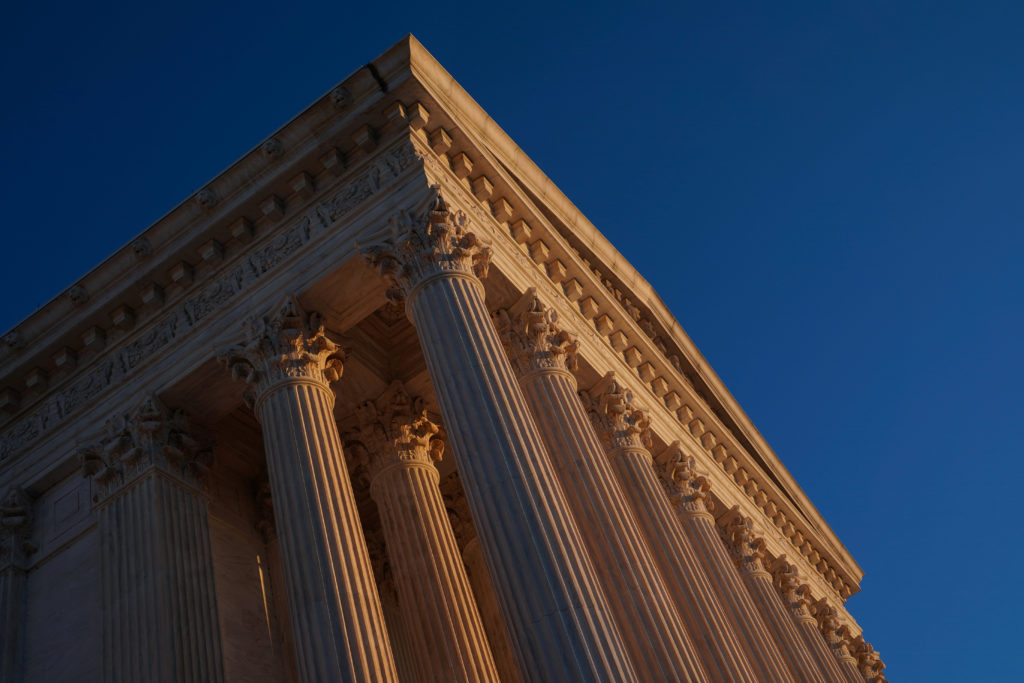
The Supreme Court begins a new term Oct. 2 with public support at a low ebb, ethics clouds hovering above two of its members, and a docket driven by challenges to social media platforms, gun laws, voting rights and more.
The first day of a new term generally conveys a sense of a fresh start. The justices’ summer break, as the late Justice Ruth Bader Ginsburg often said, allows time to sooth any hard feelings among the justices following difficult or harsh opinions.
But last summer was different.
Published news accounts of undisclosed trips, entertainment and other offerings to Justices Clarence Thomas and Samuel Alito Jr. by some of the nation’s wealthiest men, some with business before the court, kept the court in an unflattering spotlight. Senate Democrats, some legal scholars and much of the public continued to pressure the court to adopt an ethics code for itself. Seventy-five percent of voters in a recent Politico poll support a binding ethics code, too.
READ MORE: New Supreme Court term begins as ethics concerns persist
There also was considerable fallout last term from some of the conservative majority’s decisions that clashed with public views. A new test for determining when gun regulations violate the Second Amendment frustrated many lower court judges who have been thrust into the role of amateur historians. The test has successfully invalidated a number of regulations since the conservative majority’s decision two terms ago in N.Y. State Rifle & Pistol Association v. Bruen. And, hardly a week goes by without news of additional state or local restrictions on access to abortion or unforeseen harm to women seeking medically necessary abortions. The conservative majority eliminated the right to abortion in Dobbs v. Jackson Women’s Health Organization last year.
The new term does not yet have the blockbuster status of the prior two terms, but it is early. On Friday, the court added 12 cases to the 22 already granted review and will continue to add cases until about mid-January.
Still, the court is off to a slow start. The justices have filled only six of the 10 morning argument slots in October, and seven of the 12 in November. No arguments are scheduled in the afternoon.
Here are some key cases that the justices will decide in the new term.
Social media
The rights of the owners of social media platforms as well as users will undergo scrutiny in four cases.
Two cases involve laws enacted by Florida and Texas to regulate major social media platforms like Facebook, YouTube, and X (formerly known as Twitter). Both laws restrict platforms’ ability to engage in content moderation by removing, editing, or arranging user-generated content; require platforms to provide individualized explanations for certain forms of content moderation; and require general disclosures about platforms’ content moderation practices (Moody v. NetChoice; NetChoice v. Paxton).
The justices narrowed the issues they’ll consider for argument to whether the laws’ content moderation restrictions comply with the First Amendment and whether the laws’ individualized-explanation requirements comply with the First Amendment.
Two separate cases also raise the question of whether public officials, who use their personal social media accounts to communicate with the public, are acting as government officials and violate the First Amendment when they block their critics. One of the two cases involves two school board members, and the other, a city manager. (O’Connor-Ratliff v. Garnier; Lindke v. Freed)
Guns
A section of the U.S. criminal code prohibits the possession of firearms by anyone under a domestic violence restraining order. The U.S. Court of Appeals for the 5th Circuit ruled that the prohibition violates the Second Amendment because there was no historical analogue for such a ban in the 1700s or 1800s – the new test for Second Amendment cases. The justices will decide if that is correct in an appeal brought by the Biden Administration. (United States v. Rahimi)
Federal power
If business in general, and financial institutions in particular, had a list of the federal regulators that they disliked the most, the Consumer Financial Protection Bureau would be near the top of the list. The brainchild of Sen. Elizabeth Warren, D-Mass., the bureau has been under legal attack almost since its inception. The bureau is a regulatory body within the Federal Reserve System.
The latest challenge to the bureau comes from the payday lending industry. The question before justices is whether the unique funding mechanism for the bureau violates the appropriations clause in Article I, Section 9 of the Constitution. (Consumer Financial Protection Bureau v. Community Financial Services Association of America)
Voting Rights
With the 2024 elections fast approaching, the justices will likely see a number of voting rights challenges, given the number of lawsuits around the country. But their immediate focus is on a case from South Carolina. A three-judge panel ruled in January that the Republican-controlled legislature created an unconstitutional racial gerrymander by moving thousands of Black voters to a new district when it redrew congressional maps after the 2020 census.
South Carolina argues that partisan gain, not race, was the focus to ensure a safe Republican seat. (Alexander v. South Carolina State Conference of the NAACP)
This post was originally published on this site be sure to check out more of their content.






